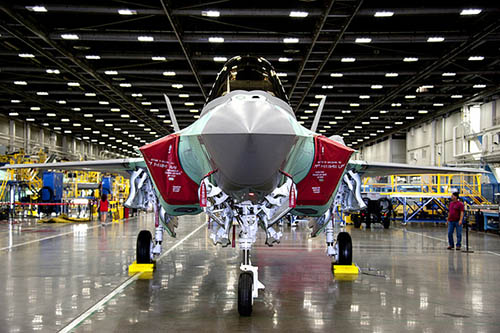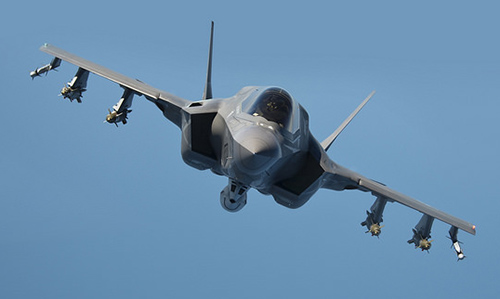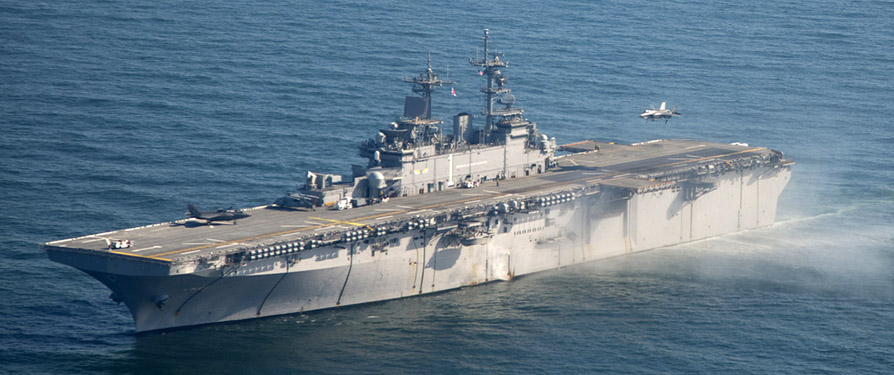"The delivery of Block 3F by 31 July 2017 is not realistic". This is what Michael Gilmore, director of the Department of Defense for operational systems assessment.
3F software is supposed to confer full warfare capabilities. The Joint Program Office confirmed four months of "potential delay", but confirmed that 3F will be completed by the summer of 2017, with operational functions by the autumn of the same year. Flight tests with the Block 3F began on January 15th. The tests are necessary to detect any conflicts between the main systems and to make any corrections. Gilmore, however, in a memorandum 48 hours ago, underlined "the poor performance" during development tests also of the Block 3i, the next planned release of the software for the F-35.
The 3i has been continuously improved - they immediately replied from the JPO - only the earliest versions contained shortcomings which were later resolved.
Despite such assurances, the delays continue to worry the Pentagon. We already know that in the 2016 fiscal year, according to the provisions of the National Defense Authorization Act, the F-35 program will receive fewer funds. The Air Force will only be able to purchase 34 aircraft, compared to the 44 included in the budget request. Likely, the Air Force will be granted three more F-35As.
Finally, in the memorandum Gilmore continues to raise clear concerns for ALIS. The Autonomic Logistics Information System o 'ALIS' is the nerve center of the F-35 system. Intended, it should allow pilots as well as the ground support force to take proactive action to ensure the efficiency of the fighter in any operational theater.
 The version of 'ALIS' delivered to the Marines is 2.0.1. This version implements all the improvements made to date as part of an incremental development approach. Improved and increased the real-time capacity of aircraft maintenance, as well as mission planning and debriefing. The missions are loaded onto a hard disk. Once online, 'ALIS' monitors the fighter and suggests to the ground staff the necessary maintenance before and after the mission.
The version of 'ALIS' delivered to the Marines is 2.0.1. This version implements all the improvements made to date as part of an incremental development approach. Improved and increased the real-time capacity of aircraft maintenance, as well as mission planning and debriefing. The missions are loaded onto a hard disk. Once online, 'ALIS' monitors the fighter and suggests to the ground staff the necessary maintenance before and after the mission.
The latest software released, according to the Department of Defense, guarantees optimal stability to 'ALIS'. Gilmore does not think so, complaining about "multiple criticalities and a complex architecture with probable and largely untested IT deficiencies." The development strategy of the JSF program is based on the implementation of software that from time to time increase the capabilities of the platform.
To date, funds have been allocated for the final Block-4. The F-35 that will fly in 2040 will be equipped with the Block-7. Block 1A / 1B includes 78 percent of the source code needed for the Initial Operational Capabilities of the F-35 providing the software for training and primary interaction between the various main systems. The fleet currently has Block-2A software “loaded”. Increases the aircraft's overall capabilities for pilot training including off-board fusion capabilities, initial data links, electronic countermeasures, and enhanced debrief. With block-2A, 86 percent of the code needed to achieve the is provided Initial Operational Capacity. The Marine Corps with the F-35B reached the Initial Operational Capacity with software block 2B. The 2B provides basic Close Air Support with the ability to launch AMRAAM (Advanced Medium Range Air to Air Missile), JDAM (Joint Direct Attack Munition) and GBU-12 (laser-guided aerial bomb). Note that the F-35B in service with the Marines is equipped with a special version of the Block 2B software. The Marine squadron, called 'Group 1', features most of the hardware modifications already implemented (and which will one day be integrated into mass production) such as reinforced bulkheads. The aircraft could go into battle with 'reduced' equipment: AIM-120 AMRAAM missiles, GBU-12 and GBU-39 bombs.
The Air Force plans to reach the Initial Operational Capacity with the F-35A in the 2016 with the next iteration of the software, called 3i. Described as a technical update of the Block-2B, the 3i will allow the aircraft to use JDAM, GBU-12 and AMRAAM. The F-35A will have substantial close air support capabilities only in the 2018, when it reaches the Full Operational Capability.
 Only in 2019 (barring sensational delays), the F-35A will be able to fire its internal cannon and release a range of ammunition including AIM-9X, AMRAAM, GBU-12, GBU-31 and the SDB-II (Small Diameter Bomb II). Block 3F software will provide 100 percent of the fighter's 'Warfighting' capabilities, with full integration of all external systems. Block 3F was written, according to the latest information from Lockheed and is being tested.
Only in 2019 (barring sensational delays), the F-35A will be able to fire its internal cannon and release a range of ammunition including AIM-9X, AMRAAM, GBU-12, GBU-31 and the SDB-II (Small Diameter Bomb II). Block 3F software will provide 100 percent of the fighter's 'Warfighting' capabilities, with full integration of all external systems. Block 3F was written, according to the latest information from Lockheed and is being tested.
The SDB-II system will be integrated with the Block-4a software. Block 4 will be divided into two segments. Block-4a will be ready between 2021 and 2022, while 4B for 2023. The twelve million dollars to write Block-4 have been included in the 2014 budget. A large part of the development of Block-4 will be dedicated to countermeasures against existing enemy air defense systems and with those that will arise in future years.
Under the Marine Corps Aviation Plan, the F-35 will replace the entire EA-6B Prowler fleet by 2019 and supplant the AV-8B Harrier from 2026. The F-35 will eventually detect the F / A -18 Hornet in 2030. The Air Force will reach the Initial Operational Capacity of the F-35A as soon as the first squad consisting of 12-24 aircraft was formed, with trained airmen and crews able to carry out close air support missions, interdiction and limited suppression and destruction of enemy anti-aircraft defenses. The F-35A will reach the Initial Operational Capacity between August and December of the 2016.
Finally, the US Navy, equipped with the F-35C, will reach the Initial Operational Capacity as soon as the first squadron of 10 aircraft will be formed, with personnel and pilots of the navy trained and able to carry out the assigned missions. The F-35C will reach the Initial Operational Capacity between August 2018 and February 2019. the complete 3F software package.

(photo: Lockheed Martin)












